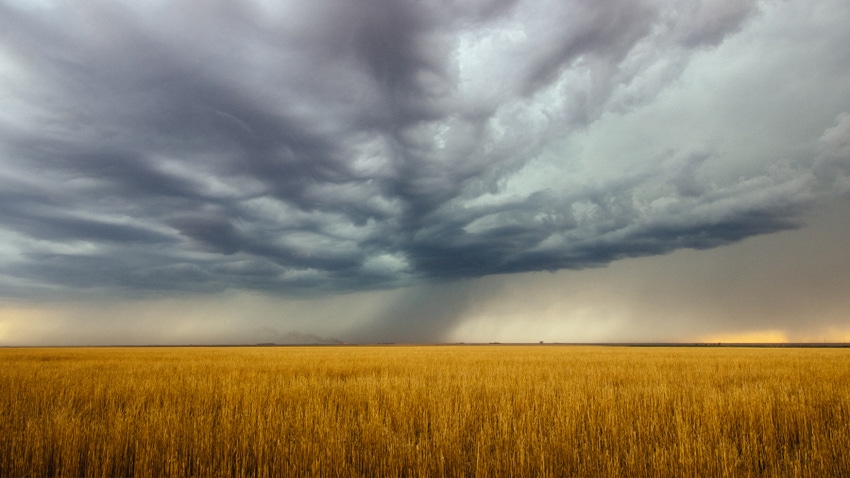
Normal days are here again. Maybe.
Matthew Sittel, assistant state climatologist, and Chip Redmond, Kansas Mesonet manager, offered Kansas farmers some hopeful news for the summer rainfall outlook in the June 15 Agronomy eUpdate.
A delayed return of El Niño made for a dry spring in most of Kansas. The National Centers for Environmental Information released monthly climate statistics for May on June 8. The state averaged 5.47 inches of precipitation, or 63% of the normal amount of 8.69 inches.
This makes 2023 the 13th-driest spring on record for Kansas, with records dating back to 1895.
Every part of the state was below its normal rainfall totals for spring, but the northwest and southwest were only off their normal rainfalls by less than 0.15 inch.
“Both central and south-central Kansas were quite dry; each had slightly less than half their normal precipitation,” the two write. “Southeast Kansas had the largest departure from normal at -6.34 inches, which was just over half their usual spring precipitation.”
The NCEI also found:
Twenty-six of Kansas’ 105 counties had a top-10 driest spring.
Of those 26 counties, Butler and Harvey had their driest spring in 129 years of records.
Rawlins County saw its 19th-wettest spring on record.
Summer outlook
Much of Kansas saw rainfall events beginning in mid-May through June that delayed wheat harvest and made some fields swampy. However, the experts warn the rain Kansas has received is nowhere near enough to break the drought just yet.
“With the dry spring, most areas still need plentiful moisture to keep up with vegetation and crop demands. Flash drought can develop rapidly and the recent greening can quickly turn for the worst. Especially when we are considering many farm ponds and longer-term moisture sources are still in very poor conditions,” they write.
New outlooks were issued June 15 from the Climate Prediction Center. Some highlights include:
Moisture pattern. The active southern jet stream that has resulted in widespread moisture for southwest Kansas and the southern U.S. is expected to shift northward in July. As a result, there is more uncertainty about the local patterns that will drive moisture. This is reflected with equal chances of normal, above-normal or below-normal moisture for Kansas during the month.
Heat moving in. Temperatures are also expected to warm as the southern heat moves northward into Kansas. The CPC predictions slightly favor above-normal temperatures in July statewide.
El Niño effects. As we move into late summer, the El Niño-enhanced southern jet stream is expected to slide back south. Therefore, the CPC predicts the three-month moisture average statewide for August and September will be above normal for much of the state. Temperatures are still likely to be above normal for most of Kansas, another typical trend from a prominent El Niño.
To read the full outlook, visit the June 15 Agronomy eUpdate at bit.ly/june15agreupdate.
Source: Kansas State Department of Agronomy contributed to this article.
About the Author(s)
You May Also Like






